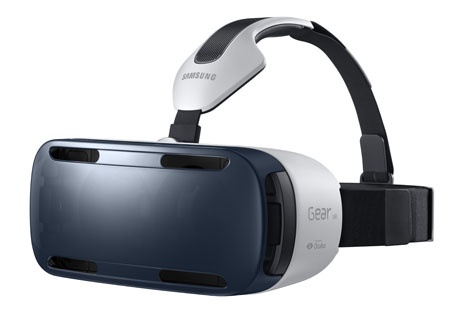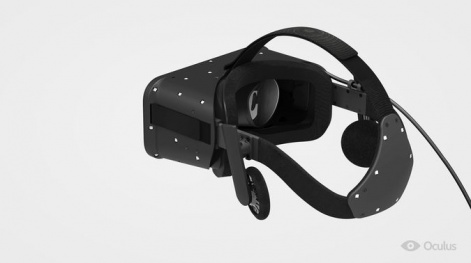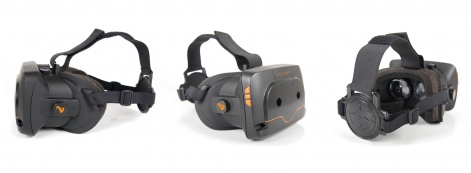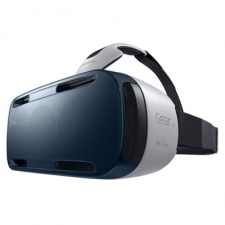Since John Carmack joined the Oculus VR team, we heard talk of a mobile element to the virtual reality phenomenon.
A phenomenon that, incidentally, is still a long way from public consumption.
How the mobile platforms were going to tie into the Oculus Rift vision was uncertain right up until we saw the Samsung Gear VR headset in action, and then it became pretty clear.
A Samsung Galaxy Note 4 - the latest version of the Korean manufacturer’s popular phablet series - provides the brains and the display of a makeshift virtual reality headset. Simple and classic.
There’s a semantic debate to be had over whether it’s still anything to do with mobile once the device is strapped to your head (virtual reality is virtual reality, after all) but this unexpected partnership suddenly brings Oculus within the public’s grasp.
But whether it will provide a decent experience or not, this is a strong move on behalf of Carmack and the Facebook-owned VR ecosystem.
Keeping the consumer on the boil
“I’ve got a lot of negative things to say about the Android development experience,” Carmack said to surprised audiences at the inaugural Oculus Connect conference.
His concerns stem from hardware fragmentation, and by partnering with Samsung and targeting one device - the Galaxy Note 4 - this issue was quickly and easily overcome, allowing the Gear VR to replace the mobile aspect of his original vision.

It’s easy to be skeptical of how effective such a simplistic route to virtual reality might be, but we’ve tested similar devices, and they work. They’re unlikely to compete with a dedicated VR headset like the Oculus Rift or newly-Kickstarted Totem, but as a fast route into retail reality, they work just fine.
VR becomes a pipeline to the consumers, keeping the virtual reality discussion alive along the long road to retail.
And that fast route is what Oculus gets from the Gear VR deal.
Yet another devkit was announced at Oculus Connect, and even that doesn’t appear to be the last word in development hardware.
Before we actually see a retail version of the Rift, or even come close to having its specs revealed, we can probably expect to see a final edition of developer hardware. That puts the device a long way from the store shelves, and therefore a long way from the red hot publicity that virtual reality is enjoying right now.
There must be a sense of apprehension in the Oculus VR offices right now. By the time a retail version is finally released, there’s a good chance that the tech world will have gone cold on virtual reality.
After all, it’s an exciting concept that so far has been all promise but little actuality.
How long are we willing to pour our limited attention on something that just refuses to materialise?

We also have to wonder how reciprocal the Samsung partnership with Oculus VR really is.
By taking the opportunity to sponsor a more basic virtual reality system that’s likely to be available months ahead of the Rift, Carmack and company keep their strong VR brand in the public eye (literally), make good on their original commitment to a mobile component, and perhaps, most importantly of all, allow the Oculus Rift ecosystem to begin blossoming long before the hardware has even been finalised.
In this sense, Gear VR becomes a pipeline to the consumers, keeping the virtual reality discussion alive along the long road to retail, and reassuring early adopters that the library of Rift games is going to be broad and industrious from day one.
The reality of making virtual games
How many developers wish they could backtrack to 2008 and turn out the iPhone games they overlooked at the time?
What if Oculus Rift games go the same way? Few devs are going to risk not getting in on the ground floor again, so they’re eager to stake a place at the starting line of the virtual reality gaming race. The Gear VR offers the promise of such a frontline position.
Devs are eager to stake a place at the starting line of the virtual reality gaming race.
This is an investment for developers, however. They’re not going to make much (if any) money until the full Rift virtual reality system eventually comes online.
Consider the $1,000-plus cost of a sim-free Note 4, with another $250 on top for the Gear VR holder. This is a very limited audience; likely only those who obtain a Note 4 on contract and decide they might as well give its VR peripheral a go.
It’s still a wise investment for game makers, so long as their software will be quickly and easily upgradable to work with the full Rift system. Games are appearing for the Gear VR already, suggesting game studios are just as excited about virtual reality gaming as we are; and just like us, they simply don’t have an outlet for that desire, regardless as to how eager everyone is.

For long enough, the Gear VR will have more games than players, and Samsung will be left wondering if this isn’t another technological dead end.
The Korean giant has resources enough to weather such a dry spell, of course, but by the time virtual reality is a working games platform, the Oculus Rift will be ready to launch and all attention will swing away from the mobile novelty and converge on the dedicated system(s).
The promise of virtual reality was made way too soon.
And we’ll be excited about virtual reality all over again, because for the 12 months previous we’ll have watched the catalogue of VR games grow from boring old sidelines of real reality; with no way to play those increasingly adventurous and capable VR titles.
Developers will have cut their teeth creating within the confines of a mobile platform, and the gaming ecosystem will have been built up ready for the hardware’s long-awaited and highly anticipated arrival.
To the point at which we’re willing to predict Rift shortages on launch day, sometime in 2015. The games will be there, thanks to the Gear VR encouraging devs to get in early despite having no audience to sell to, so the Rift will be a solid purchase for legions of PC gamers.
And when the Oculus Rift is enjoying a rich, pre-built ecosystem of games and apps in its brand new paid app store (the initially free-only Gear VR store having finally been updated to allow for monetisation at just the right moment), Oculus can hang the stop-gap solution of the Samsung smartphone holder out to dry, and triumphantly announce the arrival of the virtual reality system you wanted all along.
The promise of virtual reality was made way too soon, and that’s proving to be a problem for those on both sides of the fence who want to be involved.
That problem could gestate into ill feeling by the time you can actually buy an Oculus Rift, and the Facebook-owned trailblazer is working hard to prevent that from happening.
Its solution seems to be to make the Gear VR into a sacrifical lamb to the virtual reality gods; using it purely as a launch strategy for the Oculus Rift.
It might all sound a little conspiratorial and cutthroat, but that’s just the games industry at work. No hard feelings, but all we care about are great games.
The good news is that it should keep the premature virtual reality world on life support until it’s strong enough to take flight all on its own, and we’re very excited to see that day.
Whenever it might be.






















